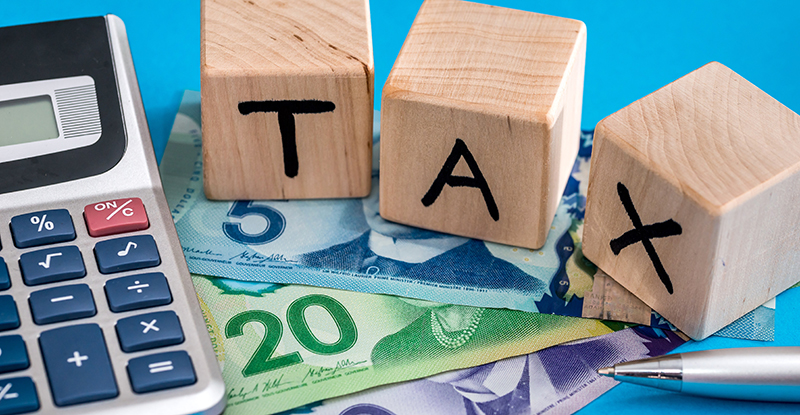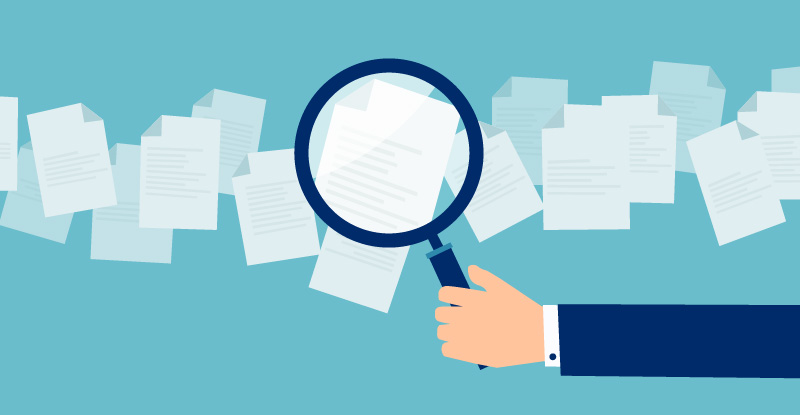
Do you have a personal income tax strategy? Having an effective tax strategy is a key to financial success, both in saving for retirement and achieving future goals such as buying a home and paying for your children’s post-secondary education. The right balance of protecting your hard-earned money in registered tax-sheltered accounts, staying informed of contribution limits and carry-forward allowances, and taking advantage of opportunities to reduce your taxable income can have a huge impact on your long-term finances.
The deadline to file your 2023 personal income tax return is April 30, 2024 and if you or your spouse earned business income through self-employment, the deadline to file your business taxes is June 17, 2024. This year, instead of simply gathering your receipts, thoughtfully allocate your funds and access applicable tax credits and deductions to take charge of your financial success.
Reducing your income and tax bill
The lower your income, the less you’re taxed provincially and federally. There are ways to lower your taxable income, including contributing to a Registered Retirement Savings Plan (RRSP), which will also help you save for retirement. RRSPs can include registered investments such as mutual funds and GICs, which means your money can grow over time. The interest and earnings on your RRSP are tax-sheltered until you withdraw them, ideally during retirement. As your income will likely be lower then, compared to your working years, your taxable amount will consequently be lower as well.
On a year-to-year basis, you may receive a tax refund if you were originally taxed on your full income because RRSP purchases reduce your taxable income. RRSP contribution limits are specific for each person, and you can find your personalized information by referring to your Notice of Assessment from last year or logging into My Account for Individuals on the Government of Canada site.
Capital gains can also affect your taxable income. Capital property includes real estate, stocks, bonds, patents, and trademarks. For example, if you sell an investment that has increased in value over the years, the profit you earn from the sale will be considered a capital gain and must be reported. Consequently, this gain will increase your taxable income, but you are only taxed on 50% of capital gains. Personal property such as jewellery and art may fall under the Listed Personal Property category, which is subject to minor differences in capital gains calculations.
When it comes to real estate, the sale of primary principal residences is exempt from being deemed capital gains. For example, if you sell the home you’ve been living in regularly, the profit you incur will not count as a capital gain, but the profit from selling your vacation home will. However, you would still need to report the sale of your primary residence for transparency reasons. Not doing so could result in being taxed on your primary home sale as a penalty.
On the other side of the coin, capital losses occur when you sell a capital property for less than your purchase price. For example, if you sell an investment such as a stock or bond for less than your original purchase price then you will have a capital loss, which you can use to offset capital gains. Capital losses can be carried forward indefinitely, so you can choose whether to use them in the year you incur them or in the future. For example, if you anticipate a capital gain in a future year, you could save your capital loss for then. Likewise, capital losses can be carried back for up to three years to offset capital gains incurred in any of those years.
Tax deductions vs tax credits
Tax deductions and tax credits can sometimes be referred to interchangeably, but they are very different. Tax deductions can apply to expenses incurred from childcare, moving, union/professional dues that you paid out of pocket, and more. For example, if you paid professional dues of $1,000 on your own with no reimbursement, you can enter this amount as a tax deduction when filing your income taxes and your taxable income will be reduced by $1,000.
A tax credit, on the other hand, reduces your taxes owed – not your taxable income. This includes charitable donations such as a workplace’s United Way fundraiser, and post-secondary tuition. For these types of expenses, you can receive up to 15% of your expenses applied to tax credit through the federal tax credit rate. On top of that, you may receive additional credit based on your provincial tax credit rate. Unused credits can be carried forward subject to conditions.
Many people may not be aware of all the expenses that can qualify for tax credits. For example, tax credits can include the Medical Expense Tax Credit, which may provide at least partial coverage for medical expenses that your health benefits don’t fully cover. With the Home Buyers’ Amount, new homeowners can claim up to $5,000 from the purchase of a home. The Canada Employment Amount allows you to claim work-related expenses such as uniforms and supplies. Refer to the Government of Canada’s site for more information on tax deductions and credits.
Note that there are two types of tax credits — refundable and non-refundable. If the sum of all your refundable tax credits exceeds your tax payable, you will receive a refund for the excess. In contrast, non-refundable tax credits only cover your tax payable, with no excess funds issued.
Tax-shelter your money and save for future goals
Alongside having an RRSP to save for retirement, it’s recommended that you also contribute to a Tax-Free Savings Account (TFSA). Like RRSPs, your TFSAs can include investment vehicles such as mutual funds, and as the name implies, all interest and earnings are tax-free, regardless of when you withdraw the funds. In 2023, the maximum annual contribution amount to TFSAs was $6,500 and in 2024 the amount is now $7,000. However, there is flexibility with TFSA contributions in the way of carry-forward amounts. As the federal government introduced the TFSA in 2009, any Canadian who was 18 years old or older in 2009, can contribute up to a maximum of $95,000 now if they have never contributed to a TFSA. This amount is pro-rated respectively for age.
Another way that can help you save for the future is the First Home Savings Account (FHSA), a registered plan that allows prospective first-time home buyers to save for their first home. Launched on April 1, 2023, the FHSA allows individuals to contribute up to $8,000 a year, with a lifetime maximum of $40,000. Similar to the TFSA, interest and earnings are not taxed, and carry-forward amounts are allowed, beginning from the date you open an FHSA. For example, if you opened an FHSA in 2023 and contributed $1,000 during the year, in 2024 you could contribute the remaining $7,000 you were allowed in 2023 as well as the standard $8,000 for 2024, totalling $15,000. If you start an FHSA in 2024, you are allowed to contribute up to $8,000.
Investing in a Registered Education Savings Plan (RESP) is a great step to support your child’s post-secondary education. Similar to RRSPs, interest and earnings on investments are not taxed until the funds are withdrawn, and this is usually done by the beneficiary (i.e. your child) when they enter post-secondary. As most students have low income, taxes owed for your children’s RESP withdrawals will be minimal, especially when factoring in tax credits for tuition.
RESPs can be opened as individual or family plans. Individual plans are ideal for one-child families, whereas in family plans, the total RESP funds can be shared among all children under the plan in whichever way the parents decide. This means, for example, that if one child will incur greater costs for their post-secondary education, they can receive a greater share of the RESP funds available. Furthermore, the Canadian Education Savings Grant (CESG) contributes up to $7,200 to each RESP and the earlier an RESP is started in a beneficiary’s life, the more likely they can receive the full CESG amount.
Digitize to stay organized, and get help
It’s important to keep your tax documents organized, including your receipts. The CRA advises to keep receipts for six years. There are many apps that you can use to digitize and store receipts including Happay, Expensify, Zoho, and QuickBooks Online. Likewise, there’s a wide selection of tax filing software available, and the software or package level you choose should depend on the complexity of your situation. Talking to a tax professional is always a great idea, and CPABC offers a free member and firm directory.
Refer to the Government of Canada’s personal income tax resources to stay up-to-date with tax-related changes and for more information to help you with your tax planning. Having a personalized and informed tax strategy can help you come out on top.
Tax rules can be complex. This article is not intended as tax advice, and you should not make tax decisions based solely on the information presented. You should seek the advice of a chartered professional accountant before implementing a tax plan or taking a tax filing position.
Angela Kaiser, CPA, CGA, CFP, ICD.D operates a public practice firm in North Delta and is a CPABC financial literacy volunteer.



